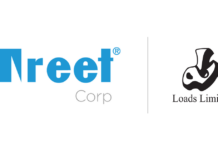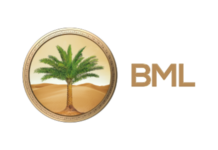The month of November has turned out to be a stellar one for oil marketing companies. In a note sent to clients on December 3 by Sharukh Saleem, analyst at investment bank AKD Securities, he noted that the oil company had been benefiting from a pickup in economic activity and government support. And similarly, in a separate note sent by Saleem on December 2, Saleem noted that the Economic Coordination Committee (ECC) had approved margin revisions, which can only bode well for oil companies.
So, turning to sales, OMC sales clocked in at 1.8 million tons for November 2021, up 2% year-on-year. Meanwhile, on a month-on-month basis, sales witnessed a decline of 12%.
Most of the year-on-year increase was led by furnace oil sales; this is because power production on furnace oil has increased, mostly because many LNG (liquified natural gas) defaulted. That led to a lower than expected LNG supply and hence LNG-based power production. However, on a month-on-month basis, furnace oil sales declined by a massive 46%, though this is to be expected: the overall power demand in the country falls during winter.
Meanwhile, sales for high speed diesel (HSD) increased by a mere 1% year-on-year, but according to Saleem, that small increase is only because there was already a high base to begin with. In fact, HSD sales during November 2020 stood at 802,000 tons, or an increase of 17% against the average HSD sales of 686,000 tons for fiscal year 2021. The sales of motor spirit remained flat on a year-on-year basis for November 2021.
Finally, HOBC (High Octane Blending Component) sales rose by 18% year-on-year, and 36% month-on-month. According to Saleem, more people are switching from motor spirit to HIBC, because it is cheaper. Of all the oil marketing companies, Attock Petroleum was the clear winner, with an increase in total volumes of 19% year-on-year, against the 2% year-on-year of the industry. This difference was even more stark in the retail fuels segment with Attock;s retail fuels’ volume increasing by 34% year-on-year against 1.1% year-on-year of the industry.
That means Attock’s market share rose from 6.8% in November 2020, to 9% for November 2021. “The resurgence in the company’s market share could be a reason for the improved storage network of the company on which Attock has been working since last year,” said Saleem.
On the other hand Pakistan State Oil (PSO), saw an increase in overall volume of 9% year-on-year, against 2% year-on-year for the industry, Most of this was due its sales for furnace oil sales increasing by 86% year-on-year against 3% year-on-year for the industry. In the retail fuels’ segment, PSO’s volume increased by 0.8% against 1.1% of the industry, taking PSO’s market share to 44.8% for November 2021 against 44.9% in November 2020.
Meanwhile, private players increased their market share in the retail fuel segment to 35.4% for November 2021, compared to 33.2% in November 2020. According to Saleem: “We expect OMC volumes to tread the same path with economic activity picking up pace while we believe the incentives provided in the fiscal year 2022 budget to the agriculture sector along with focus on infrastructure spending can provide a significant uplift to volumes in the medium term.”
Additionally, Saleem said that the government’s continued vow to increase curbs on the influx of grey products have provided an additional uplift to volumes of high speed diesel in particular. If the policies continue, high speed diesel volumes can continue to be uplifted. He expects motor spirit to post a growth of 10% year-on-year, and for high speed diesel to post a growth of 9% year-on-year for fiscal year 2022.
There is also an additional factor to consider: the recent revision by the ECC. A study by Pakistan Institute of Development Economics (PIDE) was conducted to determine the basis for revision in OMC margins. Apparently, four recommendations were provided by PIDE which were i) inflation- indexation approach where 50% of the margins were proposed to be revised by consumer price index annually, while other 50% to be revised once in two years based on interest rates, ii) margins to be determined as a percentage of retail prices, iii) complete deregulation of margins, and iv) discounted cash flow approach where cash flows from standard operations were discounted based on consumer price index and a risk free rate of return. In the last recommendation, PIDE concluded that to cover the deficit of the last five years for oil marketing companies, margins need to be increased by Rs0.71 per liter.
And it was the last recommendation that the ECC ended up going with. To recall, the last increase in margins took place in April 2021 of 5.7%, which was overdue by nine months.
What does this news mean? According to Saleem, this will affect the earnings per share of both Attock and PSO, of say about Rs5, and Rs5.2 per share. But Saleem is hesitant: “Even though the margins have been increased, we await clarity on the mechanism to be adopted moving forward before incorporating it into our estimates.” The EPS for PSO could range anywhere between Rs44.7 to Rs49.4 per share for PSO, and Rs59 to RsRs62.8 per share for Attock, depending on the margins being revised.
Saleem is confident about Attock, citing its low leverage protecting it against any increase in interest rates, high payout ratio, and improved storage network as reasons to watch out for it. On the other hand, PSO is expected to suffer from increased circular debt build up in light of higher power production on furnace oil and increasing
prices of LNG. Still, PSO could do well if power sector reforms are implemented.

























